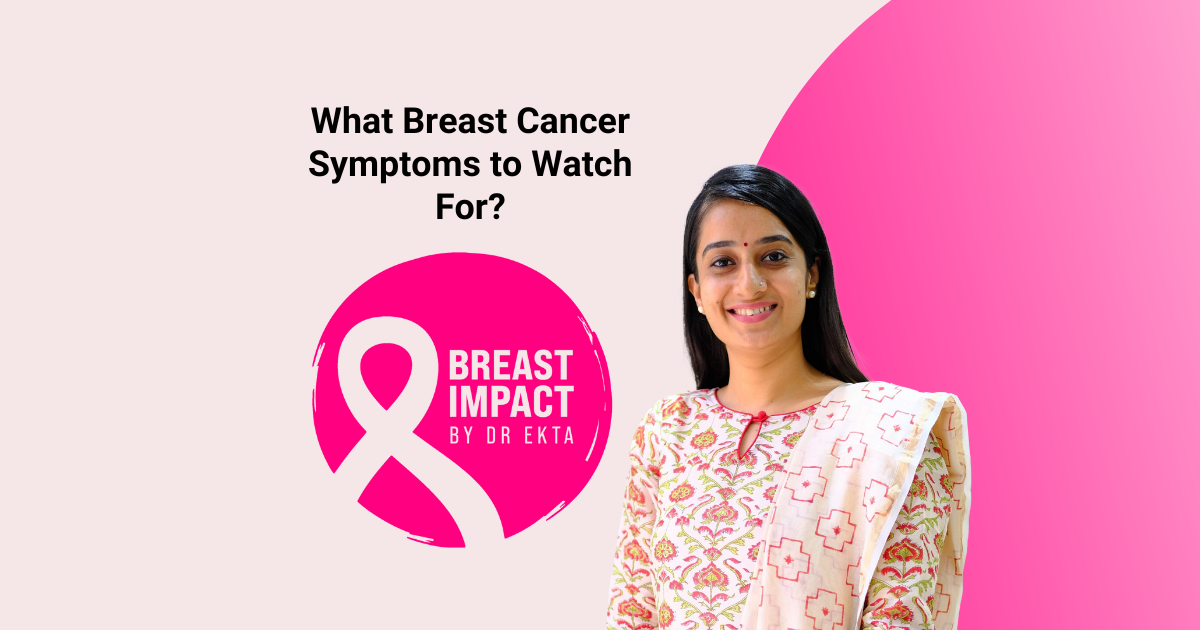Breast cancer is one of the most commonly diagnosed cancers among women worldwide. Early detection is critical in improving survival rates and outcomes. Understanding what breast cancer symptoms to look for can empower individuals to take timely action and seek medical advice when necessary. This guide offers a detailed look at the signs and symptoms of breast cancer, including common and less obvious ones, along with when to see a doctor.
Why Awareness of Breast Cancer Symptoms Matters
Early detection significantly increases the chances of successful treatment and recovery. In many cases, breast cancer does not cause pain or noticeable symptoms in the beginning, which makes awareness crucial.
Key reasons to monitor symptoms include:
- Catching cancer early when it’s most treatable
- Preventing the spread to other parts of the body
- Increasing the effectiveness of less invasive treatments
- Improving overall survival rates
Common Symptoms of Breast Cancer
Recognizing the early signs of breast cancer is essential. While these symptoms can also be related to non-cancerous conditions, it’s important to seek medical evaluation.
Look for these common warning signs:
- A lump or thickening in the breast or underarm
- Change in breast size, shape, or appearance
- Unexplained pain in the breast or nipple area
- Dimpling or puckering of the breast skin
- Nipple discharge that is bloody or occurs without squeezing
- Redness, scaling, or irritation of the nipple or breast skin
- A nipple that turns inward (inversion)
Less Common Symptoms to Watch For
Not all symptoms are as obvious, which is why ongoing self-awareness is key. These lesser-known symptoms could also be signs of breast cancer:
- Swelling in part of the breast even without a lump
- Changes in skin texture (orange peel appearance)
- Itching or burning sensation in the nipple
- A lump that feels different from the rest of the breast tissue
- Persistent breast pain not related to menstruation
How to Perform a Breast Self-Exam
A regular self-exam helps you become familiar with your breasts and notice any changes early. While not a replacement for professional screening, it can be a useful tool.
Steps for a breast self-exam:
- Stand in front of a mirror with shoulders straight and hands on hips. Look for visible changes.
- Raise your arms and look for the same signs.
- Gently squeeze each nipple to check for discharge.
- Lie down and use your opposite hand to feel each breast using a circular motion.
- Repeat the process while standing or in the shower.
When to See a Doctor
While not all breast changes are cancerous, any new or unusual symptom should be evaluated.
Consult your doctor if you notice:
- A new lump or mass that persists
- Skin changes like redness, dimpling, or thickening
- Discharge that is bloody or occurs spontaneously
- Any persistent pain or swelling
Timely consultation can make a significant difference in diagnosis and treatment outcomes.
Breast Cancer Symptoms in Men
Although rare, breast cancer can also affect men. Symptoms in men are often similar to those in women.
Men should watch for:
- A painless lump in the breast or underarm
- Nipple retraction or discharge
- Changes to the skin or nipple area
Men are often diagnosed at later stages due to lack of awareness, so prompt medical attention is important.
Diagnostic Tools for Symptom Evaluation
When you report symptoms, your doctor may use a combination of the following to determine the cause:
- Mammogram: An X-ray of the breast to detect abnormalities
- Ultrasound: Helps distinguish between solid masses and cysts
- Biopsy: Involves removing a small tissue sample for lab testing
- MRI: Used in certain cases for more detailed imaging
These tests help confirm whether the symptoms are related to cancer or another benign condition.
Reducing the Risk of Breast Cancer
While not all cases are preventable, adopting a healthy lifestyle can reduce your risk.
Practical tips include:
- Maintain a healthy weight
- Exercise regularly
- Limit alcohol consumption
- Avoid smoking
- Breastfeed, if possible
- Get regular screenings based on your age and risk level
You can read more about How to Avoid Breast Cancer to make proactive changes.
Importance of Regular Screenings
Routine breast cancer screenings are essential for early detection, especially if you have risk factors such as age, family history, or genetic predisposition.
Screening recommendations typically include:
- Annual mammograms for women aged 40 and above
- Clinical breast exams every 1-3 years for women in their 20s and 30s
- Genetic testing for high-risk individuals
For detailed age-wise screening advice, visit our blog on Colorectal Cancer Screening Guidelines by Age — though it’s for colorectal cancer, it provides context on how screenings are structured.
Emotional Impact of Breast Cancer Symptoms
Discovering a symptom can cause anxiety and emotional distress, even before a diagnosis.
Coping strategies include:
- Talking to a mental health professional
- Joining a cancer support group
- Practicing mindfulness or relaxation techniques
- Staying informed to reduce fear of the unknown
Learn more in our article on Cancer and Emotions: Impact on Mental Health.
Government and Authoritative Resources
Reliable and updated information is available at:
- National Cancer Institute (NCI)
- Centers for Disease Control and Prevention (CDC)
- American Cancer Society
Final Thoughts
Understanding what breast cancer symptoms to watch for empowers you to take charge of your health. Regular self-exams, awareness of changes, and timely medical consultation can lead to early detection and more effective treatment. If you or a loved one has concerns, don’t hesitate to reach out to a healthcare provider. Being informed is the first step toward prevention and recovery.
For professional guidance and support, contact our cancer care team today.

